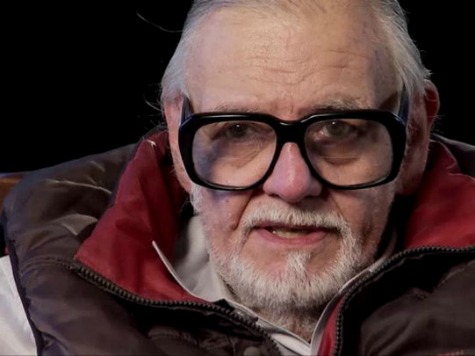
Fledgling film director George Romero looked around during the late 1960s and realized the left’s cultural revolution had failed.
“We thought we changed the world,” Romero says in the new documentary Birth of the Living Dead. “All of a sudden, it wasn’t any better, any different.”
That disappointment helped fuel Night of the Living Dead, the 1968 horror classic which paved the way for the modern zombie movement.
It’s a traditional “making of” feature, leavened by Romero’s liberal leanings and the guerilla nature of his landmark genre classic.
“It spoke to its audience in ways few horror films had done before,” the film’s narrator boasts, and it’s hard to argue.
The dawn of Romero’s Dead seem almost too precious to be true. The director, like many other artists in Pittsburgh, got his start on Mr. Rogers Neighborhood. Romero directed shorts for the avuncular kiddie show host, but eventually he yearned to make a film of his own. His attempt at a tortured teen romance went nowhere, so he decided a horror film had more commercial potential.
His instincts wouldn’t allow him to simply make yet another shock fest.
“The dead are coming back to life … that’s the revolution,” he says, adding his film defied formula in both its content and that tragic ending for the film’s hero (Duane Jones).
The shoot itself seemed like it wouldn’t yield a workable short, let alone a movie. Actors doubled as producers, makeup specialists, what have you, to meet the miniscule budget.
Having a black actor lead the survivor group proved a revolutionary stroke, even though Romero says Jones’ addition to the project had nothing to do with race. The documentary puts the casting in context by recalling the controversy over black singer Harry Belafonte putting his arm on white singer Petula Clark on national television.
Critics initially panned Dead, dubbing it morally reprehensible–at best. The New York Times sneered with a three-sentence review. The film got a warmer reception from the drive-in and grindhouse circuit, and slowly its fame took hold.
The film soon became enmeshed with the counter culture, its midnight showings taking place while the Vietnam War raged on. The documentary says the film’s suspicion of authority was well founded, a message that might ring true today if liberal filmmakers were to look past their ideological blinders.
Romero, whose Bronx accent flares up at the most colorful times, might be the happiest liberal around, past or present. His smile is pure and easy, and even when he recalls how he lost out on Dead’s revenue stream due to a copyright error he can’t bring himself to look forlorn. His first film’s cynicism, though, is impossible to deny.
The documentary tries to connect Dead to the ’70s film movement, from its anti-heroes (One Flew Over the Cuckoo’s Nest) to attacks on broadcast news (Network). The ties appear tenuous at best.
It’s enough to say Romero’s Dead had a profound impact on the horror genre, paving the way for everything from the zom-com Warm Bodies to AMC’s The Walking Dead.
And, along the way, Romero showed the right way to weave social messages into stories without robbing them of their bite.

COMMENTS
Please let us know if you're having issues with commenting.